 This week’s blog is split into two parts, but they are closely related. The first is Search Engine Optimisation (SEO) and the second is measuring the success of your marketing. Now, we would be the first to admit that we are not experts in SEO. If you want one of those, all you have to do is search SEO on Twitter and you’ll find about a gazillion people on there who either are, or claim to be, gurus on this subject and they’ll help you – for a price. But in terms of the completeness of this series of blogs, we would be very remiss if we didn’t mention this subject, so here goes. "helping people to find you, or your books, on the internet" What is SEO? It’s all about helping people to find you, or your books, on the internet and social media. 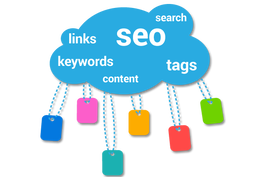 Most blogs about SEO concentrate on promoting a website. Firstly, you may not have a website and secondly, we’re mainly talking about promoting your work through social media. However, people do search for book ideas using search engines such as Google and they also do searches on Amazon and other book selling sites and the same SEO principals apply. People do searches by entering search words and the critical words they use in the query are known as “keywords”. If you are using the same keywords as the person doing the search, there is a high probability they will find you (or your book). But if you aren’t, they won’t. We looked for more information on using keywords on Amazon and this blog was quite useful. According to that article, people looking for books on a particular subject are likely to enter a short description of what they are looking for, rather than single words. This is called a “string” of keywords. 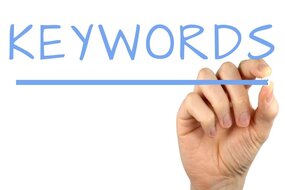 So, in the “keywords” section of your book’s description, you need to connect together several attributes about the book that someone may look for. For example, if someone is looking for a romantic novel that also involves pirates, they may type in the string “books about romance involving pirates”. I actually typed that into Amazon’s search bar and, guess what, I got several returns of books that involved both pirates and romance. 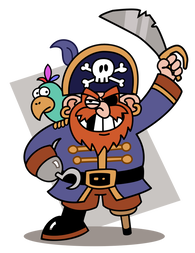 Not a very romantic pirate. Not a very romantic pirate. That approach won’t guarantee that your book is on page one of the results, but it will certainly be found and it will be in the list somewhere. We found some of the books we published on page one of the results thanks to the keyword strings we have used in their descriptions. Finding the right keyword strings may involve some trial and error. Unlike Google, Amazon’s search bar isn’t so good at predicting commonly used search terms based on what you are typing. We got as far as “Romance in…” when the predictive text gave up and didn’t suggest “including” or “involving”. When we tried “Romance and …” It didn’t carry on predicting past the P in “pirates”. This means that you have no way of knowing if a search terms has been used before. But it is worth spending some time trying out keyword strings that might work with your book and seeing what sort of returns you get on both Google and Amazon. Whatever you get is bound to feature your book somewhere in the results if you use the same strings in your book’s description. The ones that come up with the best matches are the ones to use. 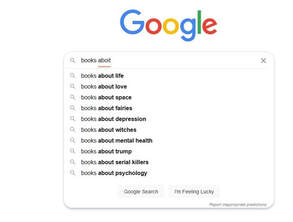 Many readers like following a series, so if your book is part of a series, even if it is only the first, make sure you include “…. book series” as one of your keyword strings eg Sci-fi book series. And if you aren’t getting the results you expected after a few weeks (you have to give things time to produce results), you can try some different strings and see how they work. Importantly, though, if your books use those keywords strings on Amazon (and other retail sites), they will also be picked up by Google if someone searches there for your books. So, you can try doing your searches there first and make use of Google’s better predictive search term capabilities. "The use of the right keywords is also a factor when you use SEO for social media." The use of the right keywords is also a factor when you use SEO for social media. As we said at the start of this blog, we aren’t experts in SEO, so we went looking for people who are and we came across this blog, which contains the key messages. 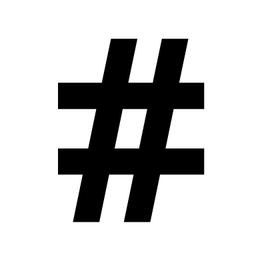 People do search social media using keywords and hashtags, so having the right keywords and hashtags in your posts will help them find you. Every day Twitter tells you what keywords and hashtags are “trending”, so you can join in the conversations if you are interested in those topics. It’s unlikely that your keywords or hashtags will ever trend, but some of those trending topics may be of interest to your target audience so RT’ing the best of the posts will help with your engagement. But for you, it is using the right keywords or hashtags in your posts so when people do searches on social media using those words, they will find your posts amongst the results. There will still be a crowd of course. If you write romance, then #romance is a hashtag that produces a lot of search results. So, you have to use something a bit more targeted, such as #periodromance or #modernromance. There’s still going to be a crowd, but it will be a smaller crowd. 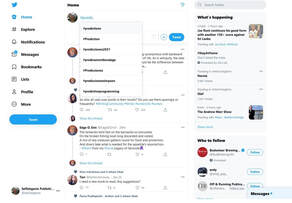 You can also create and use hashtags of your own. If your Tweets are RT’d, those hashtags will become better known over time. Your audience will start to recognise them and they will, perhaps, think of using them for searches. All hashtags started with someone creating them. Some never catch on, some are still in use years later. Finding hashtags that are already in use is easy enough. When you use the # symbol, predictive text starts to offer you choices of previously used tags. But you won’t know which ones are most popular amongst users. Just because hashtag has been used, it doesn’t mean it is useful. However, if a hashtag has been used a lot that day, Twitter will tell you how many uses it has had, eg “500 in Tweets in the last hour” 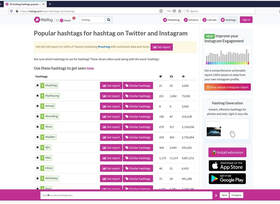 There are websites that will help you to choose the right hashtag. We use Ritetag, which is free. As well as showing you which hashtags are already being used and how visible they are, if you create your own hashtags you can look on Ritetag a few weeks later and see what sort of response you are getting. Just one final word on hashtags. Social media users comment on how distracting they are, so the experts advise never using more than three in any post and placing them at the end of the message, rather than within the main body. I was reminded of this just a few moments ago when I was on Twitter, came across a Tweet that was mainly made up of hashtags and immediately scrolled past it. "Knowing how your hashtags are working is useful information" Knowing how your hashtags are working is useful information. If they aren’t working, you need to find a way of promoting them or you need to change them. Which brings us to the generic subject of measurement. 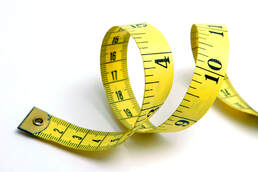 Measurement is usually regarded as the boring part of marketing. Besides, there’s only one measurement that you are interested in – book sales. But measurement is pretty important when it comes to creating a successful social media marketing campaign. If you are going to do this well, you are going to start your campaign weeks or even months in advance of your book’s publication. That is a long time to wait to find out that your social media campaign isn’t working. So, you need to measure other things along the way to tell you if you are on the right track. 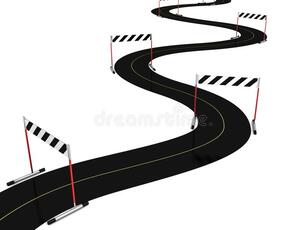 Think about a long car journey. One way to measure your journey’s progress is to read the road signs and see how far you are from your destination and, if your destination isn’t shown on the sign, how far you are from the next town along your route (known by navigators as a “waypoint”). If you have a satnav this information is constantly on display, along with an estimated remaining journey time – so you are quite used to doing this sort of measurement. Unfortunately, there is no equivalent of a satnav for your social media marketing so you will have to set up your own measurement system and your own “waypoints”. By system, we don't mean anything elaborate; just a few measurements you can track over time. You can put them into spreadsheet and create graphs if you want, but you don't have to, so long as you can read them and understand what they are telling you. If you are on the right track – great. But if you aren’t, it isn’t too late to re-think your campaign and try a different approach. In your car journey you might change your route to avoid traffic congestion at some road works and this is no different. Sometimes it only needs a slight tweak to the wording of a message to produce better results.  I’ll give you a real-life example. As part of our generic marketing (rather than targeting a specific title), we Tweet a different “Book of the Day” each day. For a long time, this wasn’t producing much in the way of interest – hardly any re-tweets (RTs) or “likes” and even fewer click throughs to Amazon. These are three of our measurements, used to assess if we are catching Twitter users’ interest. The posts we were using were images showing the book’s cover alongside its blurb. That allowed us to get past Twitter’s 280 character limit. Above the image we just said “Book of the Day” with the book’s title, the author’s name, a link to Amazon and a few hashtags, because the image told the user what the book was about – no need to repeat it (or so we thought). Then one of our colleagues mentioned how hard it was to read some Twitter posts on her phone. The text was so tiny that it was unreadable. She showed me the Tweet and I had to agree with her. I suggested she expand the image, but she said she didn’t have time to mess about like that. "The text was so tiny that it was unreadable" The penny dropped with a very loud clang. That was what was wrong with our images. People use social media a lot when they’re on the move: trains, buses etc so a lot of our Tweets will be viewed on phones and the images we were using weren’t readable on a small screen.. So, we changed the format of the Tweets. We made the wording bolder and more eye catching and, instead of using our own image, we let the link connect to Amazon, which then showed the cover image within the Tweet but made it more prominent.  The results were almost instantaneous, with more likes and RTs being recorded. But, thanks to Twitter’s analytics we could see we were also getting more click-throughs to the Amazon sales page. And then we saw that sales were going up. But if we hadn’t been measuring likes and RTs in the first place, we wouldn’t even have known we had a problem. We use different measurements to establish what levels of engagement we get on this website and we see how different messages on social media result in traffic arriving here. If you clicked on a link on Twitter to read this blog, you will appear in our measurements. Not by name of course, that would breach data protection laws, but you are there in “number of clicks” on Twitter analytics. If you publish your books through KDP, the reports they produce, which are measurements under another name, can give you some interesting insights. Firstly they indicate which formats are most popular for your books. If you aren't selling any copies in paperback, why bother publishing a paperback? They also tell you which territories your books are selling in, so you can use that information to guide your advertising strategy. If you've just spent £100 on advertising on amazon.com, but sold no books there, then there's no point in wasting your money advertising there again. Spend it in the territories where you are getting sales and you will get even more sales there. So use the measurements that various platforms provide for you for free, because they can help you.  So, measurement may be boring, but it can make the difference between a lot of wasted time and a successful marketing campaign. There is one word of warning, however. You don’t fatten a pig by weighing it (apologies to vegans, Jews and Muslims). In other words, there is such a thing as too much measurement. Businesspeople talk about the “vital few”. These are the critical measurements that tell you how you are performing. It is very easy to let the vital few become the irrelevant many. You can use some measurements for a quite a limited period of time. For example, the only time you are really interested in knowing how many followers you have on Twitter is when you start to establish your social media presence. Once you have a reasonable level of followers all you need to do is check back from time to time to make sure you haven’t lost too many. So, work out what you need to measure and when. At other times, you can let those measurements drift down the priority list and promote some that are becoming more relevant. The important thing is to use the results to inform your marketing strategy because your marketing strategy is what is getting your books noticed – or not. Next week we’re going to take a look at how you put the ideas in this whole series of blogs together into a single, cohesive plan to deliver what you want. If you think that sounds boring, just remember the old saying “Fail to plan – plan to fail.” If you have enjoyed this blog and want to make sure you don’t miss future editions, you can sign up for our newsletter. We’ll even send you a free ebook for doing so. Just click the button below.
0 Comments
 Fact: there are currently over 33 million individual book titles listed on Amazon. OK, some of those are in foreign languages or their subject matter is of no interest to your readers, but even taking them into account, there is a lot of competition for the Indie author to contend with. So, two questions: 1.What can you say about your book that will stand out from the crowd? and 2.How can you present that message in a way that will appeal to the reader? If you can answer those two questions you have a fighting chance of selling your book. If you can’t, then I suggest taking up fishing or knitting, or anything that isn’t writing books. "you are creative with words" But you are an author. That means you are creative with words. That is a good start. But you also need to engage with other forms of creativity because words alone will no longer sell books. Back in the days when the written word was king it would suffice, but in the 21st century, written promotions are as out of date as water mills to grind corn. Think about the amount of different media that is now available and then think about the sort of content that is most popular. 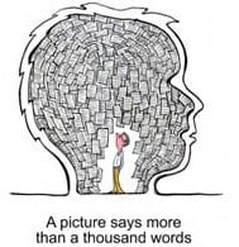 If a picture is worth a thousand words, a video has to be worth ten thousand. That’s why Twitter sets its character limit at 280. They know that some people don’t want to read messages that are longer than that – but they will watch a video. It also accounts for the popularity of Instagram and Tik-Tok. Differentiating a product is the art of making it more appealing when compared to its competitors. Car makers do that by adding different features to their cars, changing the exterior shape or providing different colour schemes and interior finishes. Ice cream manufacturers do it by selling different flavours. Some businesses differentiate on the basis of quality (“luxury” chocolates, for example) while other differentiate on the basis of price; making their product cheaper than the competition. And the author must do it by making sure that their book is more appealing to the reader than the hundreds of similar books that are available. But authors have to do it before the reader has even sampled the product. “sell the sizzle, not the sausage”  There is a saying in the world of sales: “sell the sizzle, not the sausage” What that means is that you have to create a vision of the product, rather than the details of what it is. Imagine a sausage (a vegan one if you wish) sizzling away in a pan, the aromas wafting through the air to reach your nose. Imagine it being placed on a plate alongside potatoes and vegetables. Imagine it being raised to someone’s lips as they start to eat. Compare that to the actual description of a sausage I found on the internet: “an item of food in the form of a cylindrical length of minced pork or other meat encased in a skin, typically sold raw to be grilled or fried before eating.” Which of those two paragraphs is going to make your mouth water and make you think about going out to buy some sausages? That is how you have to differentiate your books. Saying that your book is a love story about two strangers who meet on a train before being separated by a railway accident may be factual, but it isn’t exciting. It is the equivalent of the dictionary description of a sausage. But saying “Alex and Sam were doomed to be parted. Fate had its own plans for them and it would take all their hopes and dreams to bring them back together once again. That’s the sausage sizzling in the pan description. "everyone can now be a movie director" 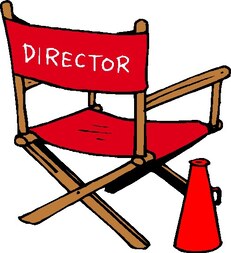 Now, imagine that you are watching TV or perhaps Youtube and you were actually presented with the image of Alex and Sam being parted and searching for each other across whatever divides them. Wouldn’t you want to know if they find each other once again? And that is what modern technology allows us to create. Because everyone can now be a movie director. All they need is a phone, some software and a bit of imagination. You don’t even have to have the phone. You can create videos from montages of photographs or other images (providing you have the right to use them). A little bit of training is always helpful and this free course offered by Future Learn is all about creating the right content for the right audiences, Throughout this series of blogs, we have focused on social media as the way to market books, because it is free (unless you use their paid advertising services). But just because it is free it doesn’t mean that you can’t get creative with it. Microsoft Moviemaker 10 (other free film making packages are available) allows you to do a wide range of things just using slides created from Powerpoint or similar packages, but if you can create video clips with your camera’s phone then you can do even more. It isn’t hard to learn to use so go, play, have fun and be creative. 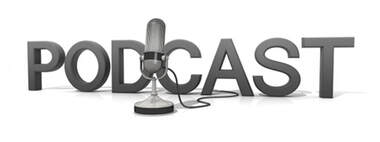 If you think making a movie is too complicated, try a podcast instead. These allow you to read extracts from your books to stimulate interest. Platforms such as Spotify for Podcasters allow you to upload your podcasts and you can promote them through your social media channels. Podcasts are very popular with people who spend a lot of time driving, as a change from listening to music.  But whatever media you are using for promoting your work, make sure the language is:
If you are writing for a young audience then you can use the sort of relaxed forms of language that young people use, but if your target audience is older, then more formal language may be appropriate. By tone we mean that the words you use match the type of book you have written. If your book is supposed to be humorous, you can adopt a bantering type of tone. If it is serious you have to use a more serious tone. If it is dramatic, then dramatic language is appropriate.  Make sure your tone is right. Make sure your tone is right. Record yourself saying the words and play them back to yourself or to a friend. Do they sound right, in the context of the book you have written? If they don’t, your audience may be put off. They certainly won’t be engaged by what you have produced, regardless of the media you are using. Above all you have to create the “sizzle” for your book to encourage the reader to click a link and go to the place where they can buy the book. If they don’t do that then your message has failed. OK, you won’t get a click from very viewer/listener/reader, but if you get enough clicks you will get sales. There are two areas we have yet to cover in detail. First of all, if a reader wants to buy a new book but hasn’t seen any of your social media content (despite your best marketing efforts that’s still a possibility), how do you help them to find it? This is called Search Engine Optimisation (SEO). We’ll be discussing that next week. 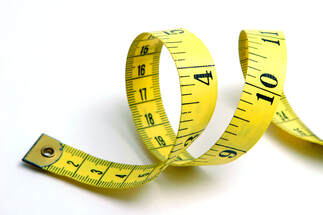 We have covered measurement in passing, within other blogs, but it is an important subject in its own right, because if you don’t measure the right things at the right time, you’ll never know if your marketing strategy is working. And if you don’t know if it’s working, you can’t improve it. So, we’ll also be covering that in next week’s blog. * Jack Trout, marketing guru. If you have enjoyed this blog and want to make sure you don’t miss future editions, you can sign up for our newsletter. We’ll even send you a free ebook for doing so. Just click the button below. This week's updated blog looks at advertising for Indie authors. 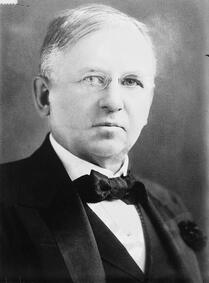 Marketing pioneer John Wannamaker Marketing pioneer John Wannamaker There will come a time when you, as an Indie author, are tempted to spend some of your hard-earned money on advertising your book, but is this a wise thing to do? The short answer is "yes". The longer answer is the subject of this week’s blog. The marketing pioneer John Wannamaker (1838-1922) is famous for saying “Half the money I spend on advertising is wasted; the trouble is I don't know which half.” That quote resonates especially with small businesses and people like Indie authors, because you can’t afford to waste any money, let alone half of what you spend on anything. But we have to remember that times were different back in Wannamaker’s day. 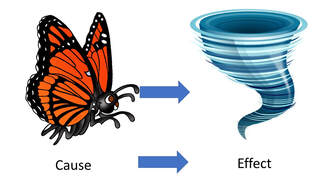 True, it is sometimes difficult to establish cause and effect. If you launch an advertising campaign and you then you sell a book, is it because of a response to the advert, or because the purchaser had the book recommended to them by a friend? But that is just a single purchase. If sales increase over the entire period of an advertising campaign, it is far easier to establish cause and effect. "it is sometimes difficult to establish cause and effect" We also have to consider the metrics (measurements) available in Wannamaker’s day. They were fairly primitive; basically, just money spent, newspaper and magazine circulation figures, and sales achieved. Today, however, on-line advertisers can provide users with a wide range of information regarding the performance of their adverts. 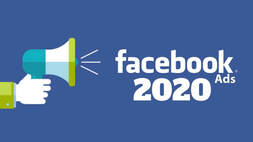 For example, Facebook Ads offer these measurements:
Technically speaking, Facebook doesn’t call this an “advertisement”, it is just “boosting your post”, but it is the same thing. Click on Facebook’s “Ad Centre” and you get exactly the same range of posting options, but they charge you a lot more – a £100 minimum budget compared to a £10 minimum for boosting your post. "If your ad is being seen by a lot of people, but you aren’t getting many engagements, something is wrong" If you can see how much “reach” you get, you can compare that to the number of engagements you got (clicks, likes and shares). If your ad is being seen by a lot of people, but you aren’t getting many engagements, something is wrong with the ad or its targeting. If you know how many clicks you got, you can then compare that with sales made and make a calculation of conversions from clicks to sales – and therefore work out how much each click cost you and earned you, eg, if your ad cost £10 and you got 1,000 clicks, each click cost you a penny. If you then made 10 sales, each sale cost you £1, with a conversion rate of 1 sale per 100 clicks. If you made £3 from each sale, it means you made £20 profit on the campaign. I know that doesn’t’ sound very exciting, but if you are an unknown author, those are the sorts of figures you are going to get until you become better known. And you become better known every time you sell a book. Trust me, it doesn’t take too many sales to get from a £20 profit on a campaign to £200 profit, especially if you have more than one book on the market.  Trying to disentangle multiple campaigns Trying to disentangle multiple campaigns The problem comes when you mount multiple campaigns running concurrently, using different advertising platforms. Although you can see which advertiser is getting you the most clicks for your money, there is no way to work out which clicks are generating the sales. You may be getting 1,000 clicks a day from an ad on Facebook, but you may be getting 10,000 clicks from an ad on Google. But if you got a total 10 sales from the two campaigns, you won’t know which ad on which platform generated the most sales. You are forced into assuming that Google is delivering the better results because they generated more clicks - but assumptions can be wrong. For this reason, we at Selfishgenie Publishing only advertise each of our books on one platform at a time, so we can be sure which adverts are generating our sales. That is also our recommendation for you, at the beginning at least.  We then compare advertising platforms to decide where to spend our money next time. We don’t necessarily ignore a platform, but we may reduce our spending on one and increase it on another. We are also able to compare budget size to results. For example, doubling the budget for an ad campaign might double sales, but it might also treble them or quadruple them – or have no effect at all. "Advertising a bad book will never lead to a profit" Throwing money into advertising can work. On all the social media platforms we discuss, the more you spend, the more people who will see your advert which means more potential buyers. But be very sure about the quality of your product. Advertising a bad book will never lead to a profit. Money saving tip - if you have published a series, advertising the series is cheaper than advertising each individual title. But you have to make sure that the series is properly set up on Amazon so that you can link to it. Consult the KDP website on how to do that. 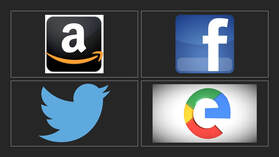 When it comes to social media advertising, we have used four platforms: Facebook, Amazon, Google and Twitter (we treat Google and Amazon as social media for these purposes, even though they aren’t). Some of them are better than others for producing results and why that should be comes from the discussion we had in earlier blogs about audience targeting. Google has by far the largest “reach” of all the platforms. An incredible 10 billion Google searches are made each month. It is used by more people per hour and in more countries than any other platform on the internet. But that doesn’t mean that it’s the best place for advertising books. Facebook allows far better targeting of audiences, which means that, although fewer people will see our advertisement, more of them will be the people that our books are aimed at. But we have to also consider age profiles in terms of their use of social media. Older people prefer Facebook to Twitter, whereas it’s the reverse for younger readers. So, although Twitter may not be as good an advertising platform as Facebook in general terms, it may be better for us than Facebook if a book is aimed at younger readers.  In terms of rankings for advertising, this blog rated the following platforms in terms of their number of users, genders and age demographics: 1. Facebook, both genders, 18-65 2. Twitter, both genders, 18 -49 3. Instagram, both genders, 18-64 4. Pinterest, women, 18-64 5. Linkedin, both genders 25-64 The principal criteria used for ranking, however, is number of users. Numbers of users doesn’t tell the whole story, however.  The ability to refine target groups is one of the most important considerations in advertising. It’s called market “segmentation”, being able to break a potential audience down the way an orange can be divided into segments, so that you only direct your advertising to the segment(s) that are most likely to be receptive. The ability to reach over 2 billion users with Facebook isn’t much good if most of them don’t read books. Because it is the book readers that you want to reach. So, I have done a bit more work to show you what each platform is able to provide. Notes: 1. Targeted by Amazon’s website extensions, eg amazon.com, amazon.co.uk etc, which means coverage isn’t global. 2. Targeting is based on previous purchases, so readers of a particular genre will see similar books. 3. Based on keywords used in the book’s description (SEO). 4. Your book’s page on Amazon becomes its advert. 5. It shouldn’t be necessary to say this, but I will. If you don’t sell your books through Amazon, there is no point in advertising there. From the above, you can see that Amazon provides the least amount of targeting, with Google second. Facebook and Twitter appear to be more or less equal. However, I now take you back to what we discovered in an earlier blog.  If people are browsing Amazon’s book pages, it means they want to buy books. This isn’t the case for other social media, where they are browsing for other reasons. In other words, while they are on Amazon they are a receptive audience. Amazon’s other advantage is that it targets readers based on previous purchases, which is a usually a reliable source of data. Twitter posts get their highest visibility for only 24 minutes after posting, whereas Facebook ads remain most visible for 3 hours after posting, Amazon ads are seen while people are browsing or as a result of searches, so they are bound to be seen – so long as they appear on the first page of search results. The further down the search results, the less likely it is they will be seen, which is why SEO is important. 75% of all the people who will see a Twitter ad will see it in the first 3 hours, whereas 75% of all those who will see a Facebook ad will see it during the first 5 hours. This longevity for Facebook means that you cover longer time periods each day. If you post at midday and one of your targeted readers doesn’t log into Facebook until 4 pm, it is quite likely that they will still see your ad. But on Twitter it is less likely. On Amazon, however, it depends on the search criteria and their purchasing history. It is highly likely that an Amazon customer will see your advert if they read your genre of books. You may think I’m pointing you towards Facebook, but I’m not. There are reasons for choosing Facebook over Twitter and reasons for choosing Twitter over Facebook. And there are also reasons for using Amazon (which is generally more expensive). If your target audience is older, Facebook is the place to spend your money. If they are younger, then its Twitter. If your customers don’t use Amazon, then there’s no point in advertising there. 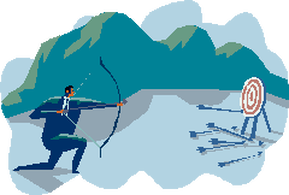 A downside for Amazon is that it is hard to attract readers new to your genre through advertising. Because recommendations are based on previous buying history, if they haven’t bought a book in your genre before, they are unlikely to have it recommended. On Facebook or Twitter there’s always the chance that a reader will see your ad and say “Not my usual thing, but I might give it a go.” You will notice that I haven’t mentioned Instagram, Pinterest or Linkedin much. That’s because they aren’t platforms with which we have much experience. Certainly, in terms of audience rankings, they fall behind Facebook and Twitter, but we also know that, in Instagram’s case at least, they are more used by younger audiences. "a lot of decision making" So, where does that leave us? Basically, with a lot of decision making. First of all, it is no use advertising unless you analyse the data that is collected during your campaign. If you aren’t getting much engagement from your ad, these may be the reasons:
If you are getting engagement but few sales, then these may be the reasons:
 The only one of those things that you can’t fix is the last one. Actually, there is something you can do about that last one. You can “unpublish” the book. It isn’t selling and it isn’t helping you, but it may be affecting the sales of other titles, or it may affect the sales of future books. There is nothing you can do about the reviews themselves. If you have 100 good reviews (4 and 5 star) and only a couple of bad ones, then the bad ones don’t really matter. But if you have 100 bad reviews but only a couple of good ones, then you have a problem. If you unpublish the book, it is as though it never existed (except for those few people who did read it). You can start afresh with the next book. But don’t try to republish under a different title or pen name to fool the readers. If a previous reader buys it and spots what you’ve done, they will complain to the retailer and that could get you barred from their site. 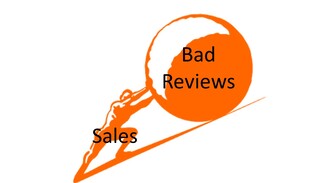 Advertising does work; if it didn’t businesses wouldn’t spend so much money on it. We have also proved it works, over multiple campaigns. But we also know, from the adverts we see on TV, that there are good adverts and bad adverts and a bad advert is a waste of money. Sometimes, however, it isn’t always easy to see the direct success of an advertising campaign. I’ll give you an example. We have run several adverts for Operation Absolom, the first book in Robert Cubitt’s “Carter’s Commandos” series. The campaigns did alright but didn’t set the world on fire in terms of results; they covered their costs and returned a small profit. However, a couple of days after the campaign ended we noticed that sales started to increase for book 2 in the series, then book 3 all the way up to book 7. By advertising the first book, we had created some new fans who read the rest of the series and, hopefully, will now also buy book 8, which has now been released. The end result, measured over a much longer time period, was a much higher profit on the campaign. This delayed reaction is something to consider if you are the author of more than one book. We’ve discussed “content” before, but it is an important subject, especially if you have to create your own to support your social media marketing, so next week we’re returning to that topic. * Henry Ford If you have enjoyed this blog, or found it informative, be sure not to miss the next one by signing up for our newsletter. We'll even send you a free ebook for doing so. Just click the button below.
This week's blog re-visited looks at where you should sell your books - and where you should promote them.  There is one P of the marketing mix we haven’t really touched on yet and that is Place. This comes in two different forms for the Indie author – where to sell your books and where to promote them. We’ll start with where to sell. There are a lot of Indie authors (and other people) who get very snooty about Amazon. Because it is so big and because its owner is so rich, they take a “stand against the man” and won’t trade with them. OK. You’re entitled to your views and I respect them. But let me tell you a few things you should know about Amazon. In 2019 Amazon accounted for 47% of all self-published books sold in the world, in all formats. That leaves all the others (Kobo, BookNook, Smashwords, Lulu, et al) dividing up the other 53% between them. No matter what your platform of choice, it is never going to match Amazon in terms of market share. "it is never going to match Amazon in terms of market share 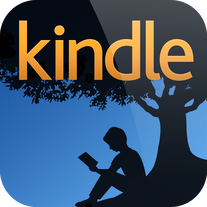 Amazon are shy about revealing details of how many Kindles have been sold, but the estimates are between 20 million and 90 million. Some of those will probably be shared between users. There is no data that I can find on how many times the Kindle app has been downloaded, but it is available to everyone who has a digital device if they fancy reading a Kindle book. That is an estimated 5.2 billion telephone handsets and an estimated 1.14 billion tablets. 72% of all books read on an ereader, are read on a Kindle or the Kindle app. Trust me, Amazon aren’t paying me to tell you these things. I’m just providing the data and you can make your own decisions. But can you really afford not to be on Amazon? OK, that’s just going to make Amazon bigger, but it is in the hands of the other retailers to try and compete with Amazon, but right now they aren’t even in the game, let alone inside the stadium and fighting for a win. 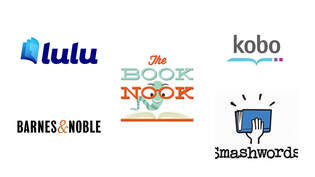 I’m not saying that you shouldn’t be on the other platforms. It makes sense to be everywhere you can, but the most likely place for your book to sell is the Big A. One of the advantages of some of the other platforms is that some of them allow the author to offer coupons and other ways to provide discounts and free books to readers. You can do this on Amazon but it is far harder and you usually have to pay for the coupons. For example, we passed a milestone for a number of followers on Twitter, so we Tweeted a Smashwords coupon code for a 100% discount on one of our books that was only valid for 24 hours. We got several downloads (and lots of new Twitter followers) and then a couple of sales from people who missed the cut-off time for the coupon but decided they wanted to read the book anyway. We couldn’t have done that with Amazon. 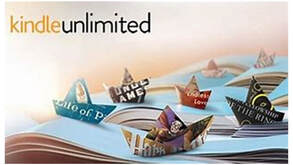 Amazon’s Kindle Unlimited (KU) programme is the biggest subscription service/lending library for Indie books. This puts the Indie author into a bit of a quandary. Because it is part of KDP’s T&Cs that you can’t enrol your eBook on KU if it is published on another platform. Sneaky, I know. So, you now have to try to work out whether you are going to be financially better off by not enrolling in KU and selling through multiple platforms, or whether your sales on other platforms aren’t worth you being there, so it is better to be on KU instead. That’s not always an easy choice to make. "That’s not always an easy choice to make." What does help is if you know where your target audience normally goes to buy their books. That is part of your market research. For example, women are more likely to buy Kindles than men – but men are more likely to become permanent Kindle users than women, if they have one. Maybe it is just that women buy the Kindles as gifts for men in the first place, but I have no evidence to back up that supposition. The good news is there’s room for some trial and error. You can enrol your book in KU at any time, so if you aren’t making sales on the other platforms you can de-list the book and enrol it on KU instead. It’s harder to unenroll from KU as you have to wait until the end of a 3 month period and if you miss the date it will auto-enrol you for another 3 months.  Now, which social media platforms are you going to use to reach your target audience? We touched on this in an earlier blog but it is time to take a more in-depth look. The demographics of social media usage varies from platform to platform. Those that are better for visual images, especially video, tend to be more popular with young people. The ones that allow you to “tell a story” in words, like Facebook, are more used by people in the 30 to 50 age group. This is going to affect your choice of platform and your choice of messages. You can be on all of them, of course, but you are going to waste some of your effort by concentrating on the wrong ones. Platform usage also varies from country to country, so here’s some stats:
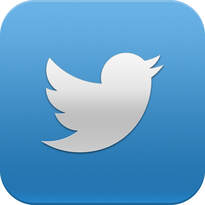 From that you might assume that the UK is all on Twitter. You would be wrong. When you look at the actual number of users it goes FB (38 million), Insta (28 million) then Twitter (17 million) so the place to be seen would appear to be FB. The same applies to the USA (310m, 95m and 68m) What makes it more difficult is that these numbers change every year. Those are the ones for 2020. Who knows where people will be by the end of 2022? But what this means is that if you are targeting a global population for your books, you can analyse data like that and decide which platform is going to be best for you to concentrate on in that country. In both the USA and UK, it is most definitely FB. This becomes even more significant when it comes to spending money on advertising (the topic for next week’s blog), then clearly you are better off spending your hard-earned cash on FB advertising, not Twitter, because FB can reach more people. "In both the USA and UK, it is most definitely FB, not Twitter. "  Facebook founder, mark Zuckerberg Facebook founder, mark Zuckerberg Of course, that takes us back into the world of personal politics because a lot of people don’t like Mark Zuckerberg and don’t want to make him any richer than he is. On the other hand, those same people want to sell books. Whatcha gonna do? You can slice and dice the data in a number of other ways. For example, is your target audience college educated? If yes, then more college educated people use Facebook than Twitter. Is your ideal reader a high-income earner? Then Facebook is also the place for you. On all 3 platforms the largest proportion of users is amongst the higher income bracket, but on FB it is a massive 74% of high-income earners. That is to say, of all those social media users who are high income earners, 74% will use FB but only 31% will use Twitter. "You can slice and dice the data in a number of other ways" Where did all that data come from? It came from this website, to which we provided a link in a previous blog. The data relates mainly to users in the USA, but there is no reason to suggest that the data doesn’t transpose to the UK, especially when you look at that number of users for the different countries that are shown above.  Market research companies allow some of their data to be accessed, which can be helpful. For example, on the Yougov website (registration is free) I discovered that fans of Bernard Cornwell are more likely to be male, over 55, interested in history and politics and follow the news and, when it comes to reading, they want to find a series that “they can dive into for a while”. If you are an author of a series of novels involving historical military fiction, that is a very good picture of your target audience. Now that I know that age bracket, I can find out which social media platform they are most likely to use and target them on that and I know what sort of messages they are going to be interested in reading and engaging with. OK, the amount of data I got from Yougov wasn’t that much, but they make their money by selling data, not giving it away for free. Having registered with them I’ll probably be bombarded with emails inviting me to take out a subscription. Maybe I will, because the insights I got from them without paying were high value in terms of audience profiling.  Author Bernard Cornwell Author Bernard Cornwell Why Bernard Cornwell? One of our authors writes historical military fiction, not that different to Bernard Cornwell’s, so by finding out who reads his books, I’ve found out who is likely to read our author’s books. But I could have got similar data for the readers of authors of any genre of book that we publish. Because their fans are probably the people we want to target for advertising. As you can see, this is again very time-consuming stuff. If you are juggling family, work and being an author, you haven’t got much time left over for marketing. Well, I don’t want to pressure you, but you can always find someone who can do some of it for you. Yes we will take a share of your royalties, but a share is better than no royalties at all. In the next edition we’re going to look at the one place where you may be tempted to spend some money – advertising. Is it something an Indie author should be considering? If you have enjoyed this blog or found it informative, be sure not to miss our next one by signing up for our newsletter. We'll even send you a free ebook for doing so. Just click the button below. Our continuing updates to our series of marketing blogs takes a look at book pricing.  Author Bernard Cornwell Author Bernard Cornwell Last year Bernard Cornwell brought out a new “Sharpe” novel and to order it for Kindle will cost you £12.99 (July 2022 price). The price last year to pre-order it was higher - £14.99. So, as a self-published, Indie author, what price should you set for your next masterpiece? Let’s look at the economics of pricing a book. Publishers, even quite small ones, have costs they must cover: rent, utilities, editing, proofreading, marketing, distribution, “back office” staff etc. All of these costs have to be recovered and, to help the company’s balance sheet, they like to recover those costs within the financial year in which the book is published. To keep the shareholders happy, the company also needs to make a profit. "the author needs to make a living" Then the author needs to make a living, so some income for the author has to be factored into the price, which also has to take into account the percentage that will be paid to the author’s agent, anywhere between 10% and 20% of the author’s royalties (the author pays the agent, not the publisher). Finally, a well-known author like Cornwell has a loyal fanbase who are prepared to pay that price to read about Sharpe’s latest adventure. You have seen a similar effect with fans queuing to be the first to be the owners of the new iPhone or PlayStation. Put those things together and you get the price that is being asked for the latest Bernard Cornwell book. Once the publisher has recovered their initial costs, usually after a year, they start to reduce the price of the book while maintaining the level of royalties they pay to the author. You can pick up most of Cornwell’s earlier work as an ebook for around £6.99. The price of the hardback is usually reduced when the paperback is released, perhaps 6 months after launch. Even paperback prices are reduced over time. 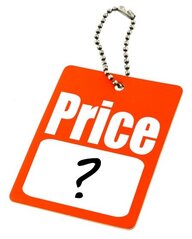 So, how much do you think you should charge for your books? Firstly, you don’t have most of those overheads. You have expended time to write the book and you may have paid for some services, such as editing or cover design, you may also have to pay for some marketing activity, but those costs are miniscule when compared to those of a major publisher. Interestingly you can make the same royalties, per copy, for your book charging quite a modest price as Bernard Cornwell will at £12.99 a pop. The difference in income between you is that he will sell hundreds of thousands of copies, but you will probably be doing well to sell a few hundred copies. At least, until you are better known. I don’t know why you got into writing, but if it was to become a millionaire, you are barking up the wrong tree. According to this research, the average annual royalties for an author in the UK in 2018 was a fraction over £16,000. The top 10% of authors earn 70% of all royalties. These are the big, well-known names. A statistician will tell you that it is the top 10% that is keeping the average as high as it is. I’ll just to do the maths for you: if you price your book to pay you £3 per copy in royalties, you have to sell more than 5,600 to make the national minimum wage – without taking your other costs into account. The mode (that’s statistics jargon meaning what the largest number of authors earn) is much lower than the average. It’s less than £11k, or 3,700 sales. "If you want to make money don't become an author, become a publisher." So, even if you can climb to the dizzy heights of earning the average income for an author, you will struggle to live on it. By comparison, the 2022 UK national average full-time salary is a fraction over £31k. It is interesting to note that many of the authors who are signed to mainstream publishers are probably earning less than their editors. They are certainly earning less than the middle managers in the publishing company. If you want to make money out of books, don’t become an author, become a publisher!  The big money for authors isn’t in selling books; it is in selling the TV and film rights to their books. Not only do they go for a large lump sum (and probably a “percentage of the gross”), they also catapult book sales into the stratosphere. It should be remembered that the first print run for “Harry Potter and the Philosopher’s Stone” (Sorcerer’s Stone in the USA) was only 500 copies, 300 of which went to libraries. It took two years to sell 300,000 copies in the UK. You need to sell around 100,000 copies to make it to the Sunday Times best-sellers list. 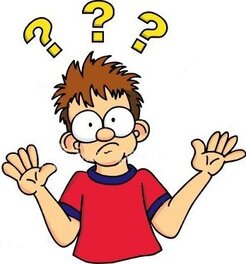 But that hasn’t answered the question: for what price should you sell your book? The answer is, it’s up to you. Some authors believe in setting a low price, hoping to sell more copies. Others set a higher price because they place a higher value on the content. I don’t believe in setting too low a price. I think the readers look at the price and say “If it’s that cheap it can’t be very good” and pass it by. Besides, if you want to drop the price to boost sales, perhaps ahead of the release of a sequel, then you have nowhere to go. "When you sell on Amazon, they set a minimum price" When you sell on Amazon, they set a minimum price (some other platforms also do that). The minimum price is what Amazon thinks they deserve for allowing you to use their platform, which includes delivery via their internet channels. Above that you can sell at whatever price you wish. We set a price of between £2.99 and £5.99 depending on the length of the book. That gives a total royalty between £1 and £3 (approx) per copy. But that is shared 50:50 with the author. If you don’t have a publisher, you get the whole lot. 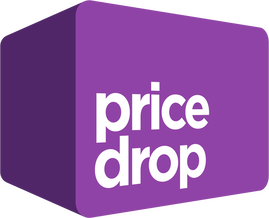 As suggested, there are times when we reduce the price. Amazon will allow us to do that once per title every three months, for up to 5 days per quarter. We will take advantage of that if we want to stimulate interest in a series ahead of the next book being released. Amazon also allows a book to be given away for free using the same parameters and we have also done that. What do the experts say? Well, we came across this article which seems to cover the main points.  Now to Kindle Unlimited (KU), Kindle Select and Kindle Lending Library. These are three names for pretty much the same thing. Readers pay a subscription to these services (they also get it free with their Prime subscription) and the income for that (after Amazon has deducted its fees) is pooled. Every time a reader downloads and reads a book, the author gets a share of the pool. This is currently about 0.5p per page read, what KDP calls the Kindle Edition Normalised Pages (KENP). This bears no relation to the actual number of pages in a paperback. So, if your book is 400 KENP long and the reader reads it all the way through, you will earn about £2. Depending on the sale price, that may be less than if they bought the book. 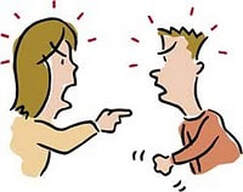 Because of this disparity, there is a difference of opinion about whether to allow your book to be listed on these services (you do have a choice). Books on KU can’t be sold anywhere other than through Amazon, which is why the big names don’t use these services. But there’s another reason they don’t use them – it takes too long for publishers to recover their overheads. But Indie authors don’t have that problem. “But if they download my book for free, I won’t make so much money.” is the usual objection. But you will make some money and if they don’t download your book for “free”, you don’t make any money. Let me give you an example. If someone sees a film on Amazon they want to watch, but they also subscribe to Netflix, are they going to buy the film from Amazon? No, of course they aren’t. They’re going to download it for “free” from Netflix. The same applies to these other subscription services. The reader may be interested in your book, but if they can’t download it for “free”, they’ll pass it by and find one they can. Just so you know, Amazon’s Kindle Unlimited paid out over $250 million (quarter of a $ billion) to Indie authors in 2019. It currently accounts for 14% of all books read. And here at Selfishgenie Publishing, income from Kindle Unlimited makes up around 66% of our total income. Yes, we make far more money from “free” downloads than we do from sales. So, we enrol most of our titles in those programmes, unless the author asks us not to.  By the way, if you are a Kindle Unlimited subscriber and you download a book but don’t finish it (for whatever reason), don’t just stop turning the pages. Please keep swiping through until the end. That way the author gets the full share of the pool for that book. It’s a small thing, but it is a good thing to do to help other Indie authors and it costs you nothing. Giving away books for free - other than through the subscription services - is something we are reluctant to do. The thinking is that the free book will raise the author’s profile and the reader will buy other titles by the same author. We have little evidence that, for example, giving away the first book in a series will encourage a new reader to buy the second book. There seems to be plenty of readers who are only interested in free books and will take them, but that is all they do. We don’t even know if they actually read them. It’s a bit like a pub giving away a beer brand for free for a period as a promotion. The drinkers will take the free beer for as long as it lasts, but they won’t necessarily buy it when it’s sold at its normal price. They often go back to their usual tipple.  We do give away one title for free every Christmas as a good will gesture. It’s called “An Alternative Christmas Carol” and it gets a lot of downloads. Strangely, when we take it off free offer after Christmas, we often sell a couple of copies. Bizarre! So, that’s pricing for you. If you think you can sell at a high price – try it, but don’t be surprised if readers don’t buy the book. Better to be modest when you start out (< £5) and increase your prices later when you have established your reputation. If you have enjoyed this blog or found it informative and want to be sure not to miss the next edition, just sign up for our newsletter. We'll even send you a free ebook for doing so. Just click the button below. |
AuthorThis blog is compiled and curated by the Selfishgenie publishing team. Archives
June 2025
|
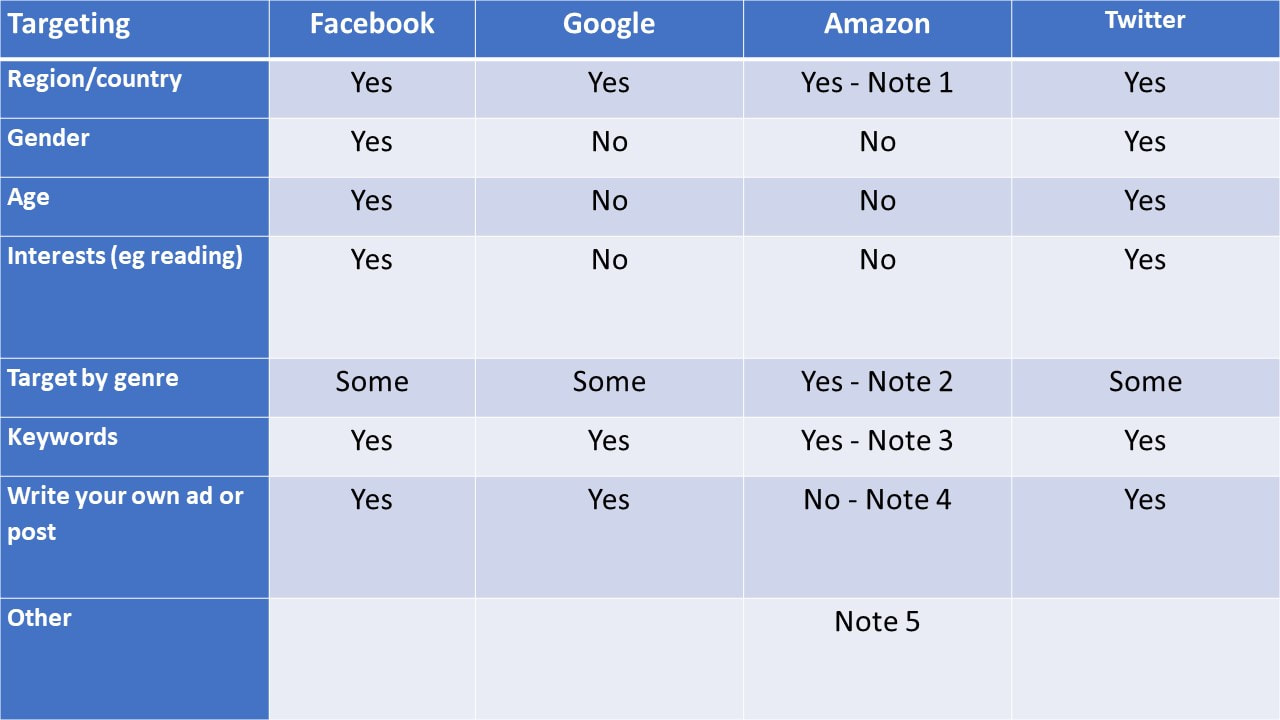
 RSS Feed
RSS Feed